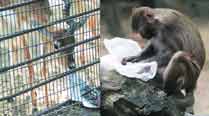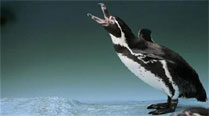 The zoo authorities had then set up an enclosure measuring around 70 square feet and put the tortoises inside in a number of shallow trays. (Representational image)
The zoo authorities had then set up an enclosure measuring around 70 square feet and put the tortoises inside in a number of shallow trays. (Representational image)
After the forest department handed over 23 rescued star tortoises that had been kept at the Byculla zoo to Resqink Association for Wildlife Welfare (RAWW), the non-profit has said it is keeping the animals under close watch. The 23 surviving tortoises, a protected species, are from a batch of 107 that were rescued from various pet shops by the Thane forest department and placed in the care of the Byculla zoo in November 2015.
The zoo authorities had then set up an enclosure measuring around 70 square feet and put the tortoises inside in a number of shallow trays. After the forest department officials learnt that most of these animals had died, they decided to hand them over to the NGO earlier this week for better care. Denying allegations of negligence, the zoo maintained that the tortoises had been weak when they first arrived.
“They were in a bad shape when they were brought to the zoo, due to the poor conditions in which they had been kept at the pet shops. They were severely dehydrated too. In such species, many of the babies don’t survive and only around 20-25 per cent are known to make it to adulthood,” said an official.
He added that post mortem was conducted for a few of those who died and the cause of death was noted to be dehydration and infection.
Stating that it is unlikely that the tortoises would be dehydrated over a period of two years, Pavan Sharma, founder of RAWW, said, “When they were brought to us, their shells were oily and sticky and they were covered in each other’s excreta. We had to first clean them carefully. They have now been kept in batches according to their size, to ensure they get more attention. If you place all of them together, it is difficult to monitor them and one cannot know if all of them are eating well.”

